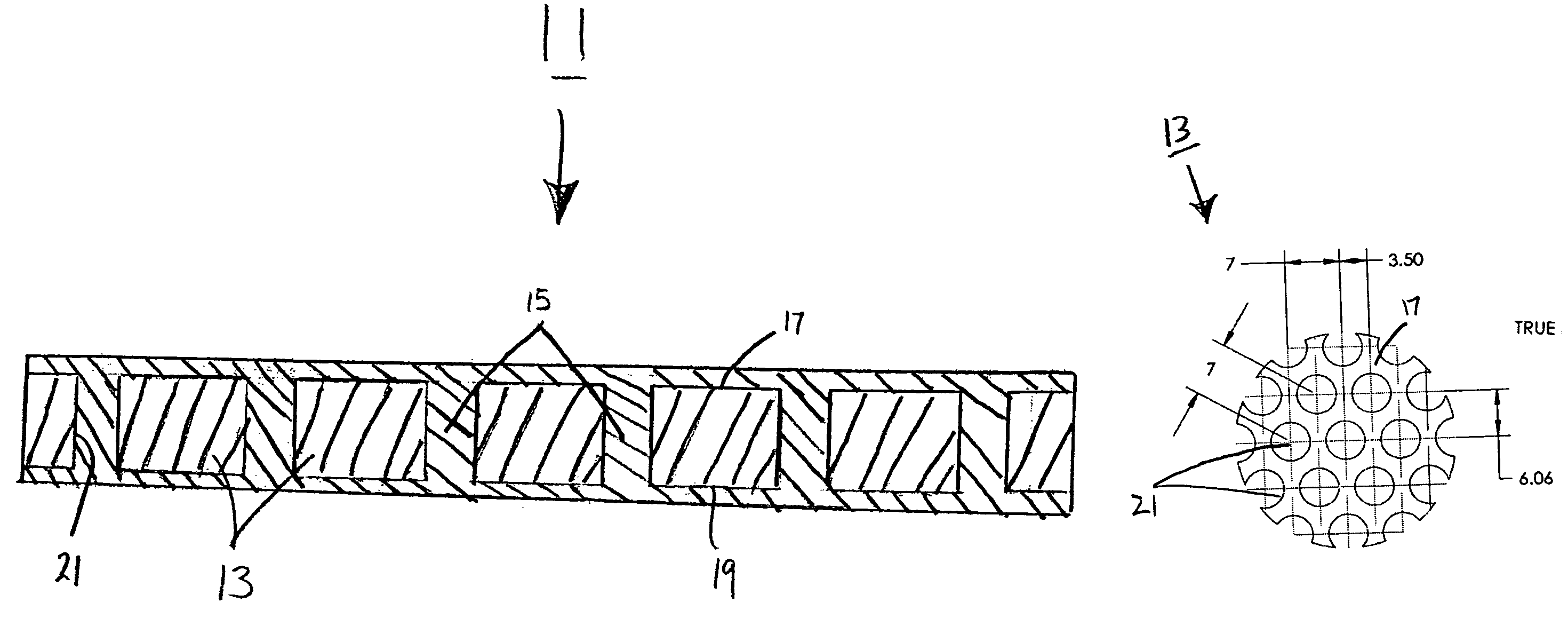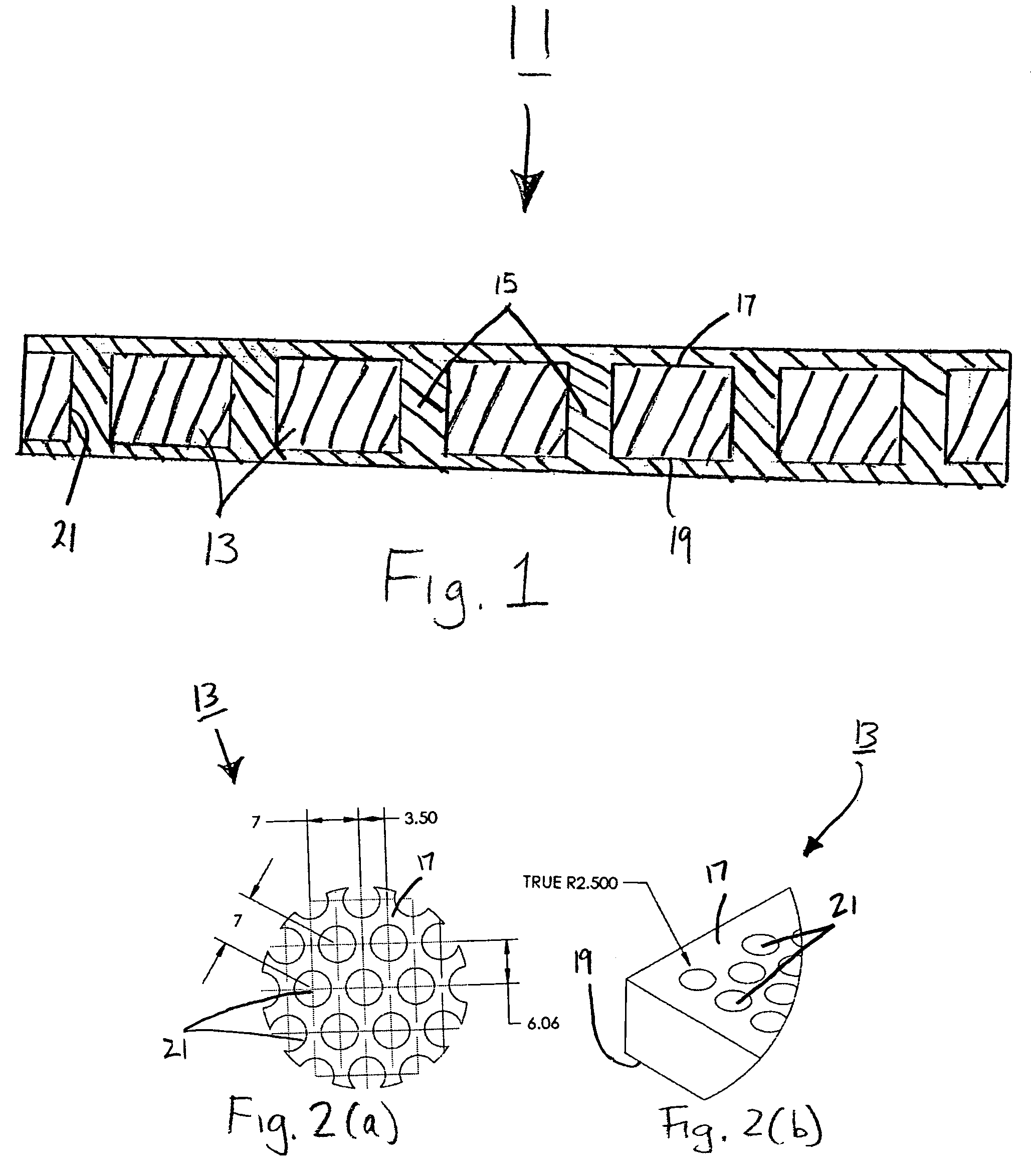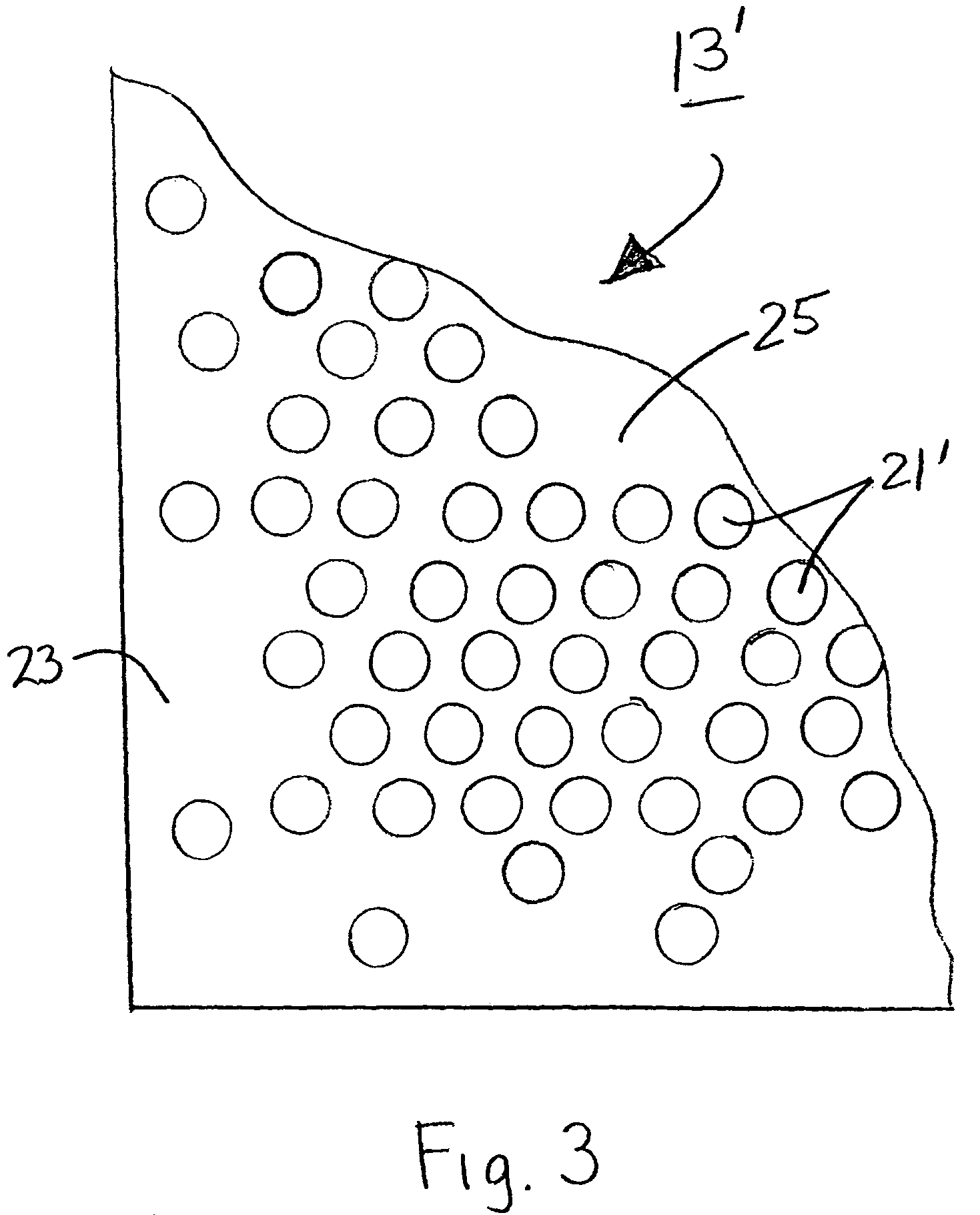Solid polymer electrolyte composite membrane comprising plasma etched porous support
a technology of electrolyte and composite membrane, which is applied in the manufacture of electrolytic capacitors, cell components, sustainable manufacturing/processing, etc., can solve the problems of premature failure of cell operation, increased shorting, and increased pfsa pems tear resistan
- Summary
- Abstract
- Description
- Claims
- Application Information
AI Technical Summary
Benefits of technology
Problems solved by technology
Method used
Image
Examples
Embodiment Construction
[0029]Referring now to FIG. 1, there is shown a schematic section view of a first embodiment of a solid polymer electrolyte composite membrane constructed according to the teachings of the present invention, said solid polymer electrolyte composite membrane being represented generally by reference numeral 11.
[0030]Composite membrane 11 comprises a non-electrically-conductive support 13 and a solid polymer electrolyte 15, support 13 being impregnated with solid polymer electrolyte 15.
[0031]Referring now to FIGS. 2(a) and 2(b), support 13 can be seen to be a generally sheet-like, unitary structure, preferably of high mechanical strength, having a top surface 17 and a bottom surface 19. The thickness of support 13 may vary, depending upon the type of use to which membrane 11 is put and the types of pressures typically encountered by support 13 in such a use. For example, where membrane 11 is used in an electrolyzer, support 13 preferably has a thickness suitable for withstanding pressu...
PUM
| Property | Measurement | Unit |
|---|---|---|
| diameter | aaaaa | aaaaa |
| diameter | aaaaa | aaaaa |
| thickness | aaaaa | aaaaa |
Abstract
Description
Claims
Application Information
 Login to View More
Login to View More - R&D
- Intellectual Property
- Life Sciences
- Materials
- Tech Scout
- Unparalleled Data Quality
- Higher Quality Content
- 60% Fewer Hallucinations
Browse by: Latest US Patents, China's latest patents, Technical Efficacy Thesaurus, Application Domain, Technology Topic, Popular Technical Reports.
© 2025 PatSnap. All rights reserved.Legal|Privacy policy|Modern Slavery Act Transparency Statement|Sitemap|About US| Contact US: help@patsnap.com



